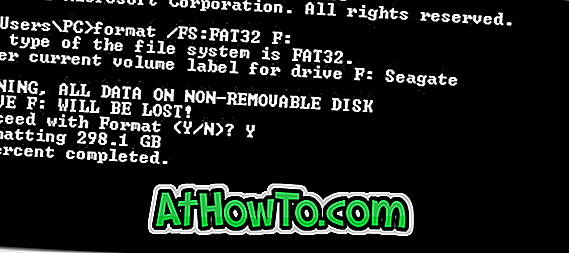
- #HOW TO FORMAT SEAGATE FAT32 HOW TO#
- #HOW TO FORMAT SEAGATE FAT32 WINDOWS 7#
- #HOW TO FORMAT SEAGATE FAT32 MAC#
Once you have every option how you want it, click “Start” to begin the formatting process. Unchecking “Quick Format” makes Windows check the disk sector-by-sector with a low-level format that takes much longer, but it will also wipe all traces of any old data completely. The data is still on the drive but all references to it are lost, so it will be overwritten as you use the newly formatted drive. Format Options (Quick Format): If the drive is in good working order, you can select “Quick Format,” which performs a high-level format and finishes quickly.Volume Label: This is the drive name that will appear when you see your formatted drive in File Explorer.Generally, you never need to modify this setting, so use the default allocation unit size that appears (usually 4096 bytes for NTFS) when you select the file system you want. Allocation Unit Size: This is the basic block size used by the file system when you format your drive.In the FAT32 Format window select the drive to format and type a volume label if you want to. Itll format the drive to FAT32 and let you know when its done. Back to the main interface click Apply to commit.
#HOW TO FORMAT SEAGATE FAT32 MAC#
If you want the drive to be readable and writable on a Mac as well, choose exFAT. Choose FAT32 in the File System drop-down menu. In general, you’ll want to select NTFS if the drive will only be used with Windows. System Manufacturer/Model Number: Custom Build. I decided to leave this post up in case it helps someone else. Depending on the drive’s size, your options will be FAT, FAT32, NTFS, or exFAT. Nevermind lol I used a program called guiformat.exe - worked like a charm. I stopped that process and did the same process with Easeus Partition Manager and it took all of ten seconds to complete.
#HOW TO FORMAT SEAGATE FAT32 HOW TO#
#HOW TO FORMAT SEAGATE FAT32 WINDOWS 7#
I am on Windows 7 and tried to use GUI Format HD to FAT32 (so I can back up my PS3). Fdisk will not work because it is Dos and it can not see the NTFS partition. Anyone that can be to use the manufacturers disk tools (SeaTools). We’ll go over each item one-by-one so you can decide in order to use fat 32 wihtout any severe problems you will need to make a partition smaller than 120 gigs. Thanks a ton in advance First thought would answered his own question, but didnt supply the solution. It presents options about how you want to format your drive.

In any File Explorer window, browse to “This PC.” In the list of “Devices and Drives,” right-click the drive you’d like to format and select “Format” in the menu that appears.Ī “Format” window will open.


 0 kommentar(er)
0 kommentar(er)
